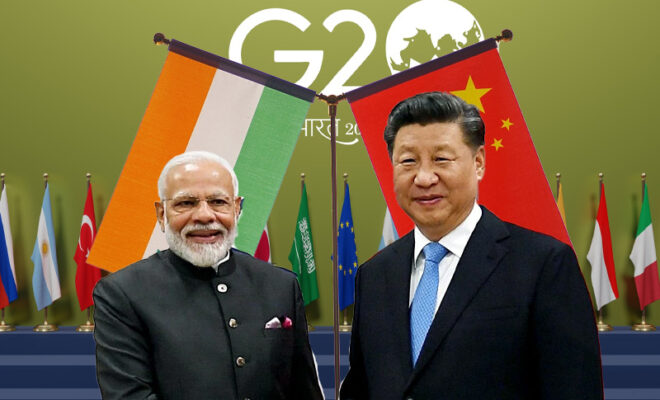China Seeks ‘Consensus’ on Its Terms With India

Despite all the Chinese rhetoric about Prime Minister Narendra Modi and President Xi Jinping reaching a “consensus” at the G20 summit dinner in Bali to normalize relations, the issuance of stapled visas to Indian Wushu athletes from Arunachal Pradesh for the Chengdu Games demonstrates Beijing’s desire to maintain tense bilateral relations. In essence, agreement on the Chinese language.
The Chinese decision is a part of their wolf warrior diplomacy, which started in August 2010 when they refused to issue a visa to the then-Northern Army Commander Lt. Gen. B. S. Jaswal for military dialogue on the grounds that Jammu and Kashmir was disputed territory. While India has rightly chosen to withdraw the entire Wushu team from University games as a protest against stapled visas, the Chinese decision is part of their strategy.
Despite the fact that there was no agreed-upon text, Beijing and New Delhi are free to interpret the meetings on their own terms and issue a statement. This is true even though the Chinese readout of the meeting between National Security Advisor Ajit Doval and his Chinese counterpart Wang Yi outside of the BRICS NSA meeting in Johannesburg has received a lot of attention. The same thing took place when S Jaishankar, the minister for external affairs, met Wang Yi, who was dressed as the foreign minister, in Bali prior to the G-20 Ministerial. EAM Jaishankar tweeted a brief summary of the meeting, whereas Beijing released a lengthy statement. Simply put, “consensus” is the Chinese description of PM Modi and President Xi Jinping’s casual conversation over dinner, which may have something to do with the Chinese president’s trip to India for the G-20 summit in September. As there was no agreed-upon text and only a positive Mandarin spin on an informal meeting, New Delhi, for its part, isn’t even wasting time on this description of bilateral ties.
However, India has taken the issue of stapled visas very seriously because it is obvious that with China, no matter how much things change, they always end up staying the same. Beijing has not changed its previous positions on the LAC, Arunachal Pradesh, or the CPEC in Occupied Kashmir via Shaksgam Valley, which was illegally ceded to the Middle Kingdom by tributary state Pakistan. However, since the 2017 Doklam standoff on the India-Bhutan-China trijunction and after the May 2020 PLA belligerence on Pangong Tso in East Ladakh, Beijing has thrown the bilateral agreements from 1993 and 1996 out the window, making matters more complicated.
In this regard, the Narendra Modi administration has no illusions about an expansionist China, as evidenced by PLA posturing along the 3488 km LAC and in the Indian Ocean, where Chinese ballistic missile tracking and surveillance ships are busy charting the seafloor for potential Chinese nuclear submarine routes. The Indian Army will be forced to withdraw troops from the eastern sector if the worst-case scenario occurs in either of the seven northeastern states, even though New Delhi has not discovered any evidence of Chinese involvement in the violence in Manipur.
India has no choice but to fence the 1300 km long border due to the weak control of the Myanmar junta and army on its western borders, or else face a flood of synthetic drugs and heroin from liberated zones within Burma and weapons from Yunnan province of China.
One must keep in mind that a number of armed extremist organizations in Manipur have ties to China and that Beijing only provides international support to international pariah Myanmar in exchange for its strategic geographic location and priceless national resources.
Also Read:- Pickpocketing, Theft Cases On Rise At Karachi Airport, But No Arrest
New Delhi has a number of security concerns with China due to PLA infiltration into Bhutanese territory through infrastructure expansion along Amu Chu (also known as Teesta River in India), and the relationship is far from stable or even moving in that direction. Both in the western and eastern sectors, the PLA is in a dominant position and poses a threat to India. Perhaps the only thing the Chinese want is for Indian businesses and businessmen to look to Beijing for cheaper goods to use in India without even batting an eye at the growing bilateral trade deficits in the other country’s favor. New Delhi has leverage over visas now that China has opened its doors to trade following the discovery of a coronavirus with clear origins in Wuhan, provided it chooses to use it.



